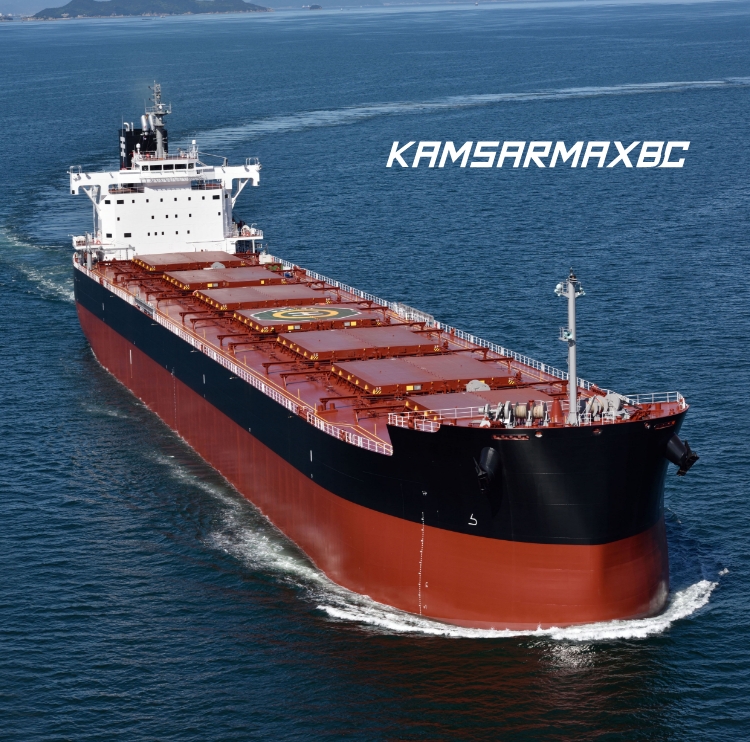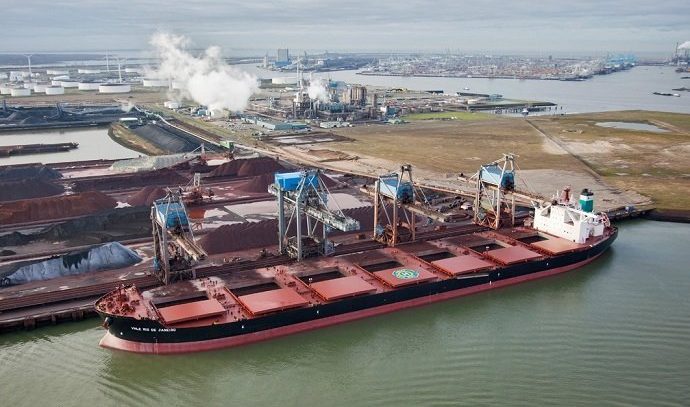 |
 |
 |
 |
 |
| Autor |
Wiadomość |
FrankJScott
Dołączył: 26 Lut 2021
Posty: 213
Skąd: Heating Services |
|
 Updated Kamsarmax Info Updated Kamsarmax Info |
 |
Seagoing Bulk Carrier The General Purpose and Use
There are numerous risks that can be encountered while operating seagoing bulk vessels. You must plan your trip well and exercise caution in dealing with any shipboard issue. This site provides quick details to the international shipping community about the best way to load and disperse bulk cargo. But, it should not exceed the restrictions that are set by the classification society. It is important to minimize the chance of stressing structure of the ship and to follow the safety rules for the safety of sea travel. You can find helpful information on bulk carrier topics on our pages of detail for both those who work at sea and those ashore.
General characteristics of seagoing bulk ships
Bulk carriers are single deck vessels designed with top-side tanks and hopper side tanks in cargo spaces . They are designed mostly to transport single-commodity bulk cargo. Solid bulk cargo could be any substance, apart from gasoline or liquid made up of a mixture of granules and particles. They can be loaded directly into the space of the ship's cargo areas without any kind of container. These dry cargoes can include bulk grain, sugar, and ore. Bulk carrier, as it is understood in its broadest sense is a term used to describe all vessels specifically designed for carrying bulk cargo, like liquid cargo or solid cargo. Tankers would also be included. The term is typically used for ships that transport solid bulk cargos. This would include grains and similar agricultural products. Check out this valemax blog for more.

What Is A Bulk Carrier What Are The Main Features Of Bulk Carriers:
"A ship which is intended primarily to carry dry cargo in bulk, including such types as ore carriers and combination carriers"
Carrier Capacity that ranges from 3,000 tons to 300,000 tonnes
-Average speed 12 15 knots
-Single deck ships, ie no tweendecks
Carriers with medium to small size bulk (carrying capacities of between 40,000 and 60,000 tonnes) typically come with cargo handling gear. However larger vessels can make use of facilities on shore to load or unload.
The dimensions of cargo hold are typically vast free of obstructions. They also have larger hatch sizes that enable easy loading and unloading.
Most bulk carriers have a cargo space dedicated to ballast. This is used for ballast voyages to improve stability. For partially ballasting, one or two additional holds may allow but only in ports.
-They have single pull, hydraulic or stacking (piggy- back) hatch covers made of steel.
-Four types of ballast tanks :
Sloping topside wing tanks
Bottom side of wing tanks that are sloping
Double bottom tanks
Peak and after-peak ballast water tank.
What is a solid bulk cargo? Solid bulk cargo is anything other than liquids or gases composed of grains, particles, or larger pieces that can be placed directly into the cargo space without any extra containment. It is imperative to ensure that all cargoes are ready for loading, regardless of whether they're "clean" or "dirty", and that there isn't any contamination. Cleanliness must be appropriate for the cargo to be loaded and will usually require a surveyor to assess the space to ensure it is suitable for loading. To prevent contamination, it's essential to eliminate any residues left by prior cargo. The bulk cargo is most susceptible to being damaged by water. This implies that the hold must be dry in order to allow cargo to enter. Additionally hatch covers need to be watertight and sealed if required to stop water from entering. All fittings within the storage areas (pipe guards, cover for bilge, etc.) should be examined. It is crucial to examine all fittings in the hold for cargo (ladders and pipe guards, etc.) and ensure they are installed correctly. They may cause serious damage to conveyor belts, which could lead to delays. If the equipment gets discharged by cargo, the vessel may be held liable. Check out this bulkers url for more.

Bulk Carrier Bulk Carrier Bulker Bulk Carrier, Bulker? A vessel that can transport dry cargo. It's not designed to function as a liquid bulk carrier or tanker. A conventional bulk carrier is constructed with a single deck, single skin double bottom, topside tanks, and side tanks in cargo spaces. Bulk carriers can carry any bulk cargo that is light or heavy grain up to their maximum deadweight. The loading, transportation and finally the discharge of dry bulk cargo is not as simple or straight-forward as people think.
Gearless Bulk Carrier
Certain bulk cargoes can be dangerous and may be damaged in transit. Unsafe loading could cause damage to the ship. The ship can bend if it is loaded at its maximum forward hold. This could cause the ship to stress. could have fatal consequences during rough seas. Also, residues from earlier cargoes could cause serious harm to the future cargoes. Certain bulk cargoes can suffer water damage. cement power. It is hard to determine the amount of cement used and the weight of cargoes loaded and unloaded. These factors can have severe consequences on the safety of bulk cargoes. Discharging bulk cargo using? Bulk cargoes can be conical when they are loaded onto conveyor belts. The angle that is created by the cone is known as 'angle of repose'. It differs from cargo to cargo. Cargoes such as iron ore are likely to form a steep angled cone, while cargoes that flow freely create an angle that is less than. A cargo that has an angle that is low to rest is more susceptible to shifting during passage. If the cargo is close to the point of completion, bulldozers might need to be used to spread the load into holds. Dry bulk carriers typically have to use facilities at shore for loading cargo and discharging. But, some bulk carriers have self-unloading facilities, such as conveyors below cargo holds or cranes that go up deck.
|
|
| Sob Gru 11, 2021 00:22 |
     
|
 |
Reklama
|
|
| Sob Gru 11, 2021 00:22 |
|
 |
|
|
|
|
|
Nie możesz pisać nowych tematów
Nie możesz odpowiadać w tematach
Nie możesz zmieniać swoich postów
Nie możesz usuwać swoich postów
Nie możesz głosować w ankietach
|
|
 |
|
|

